The South American leaf fish can disguise itself as tree leaves that look more like the real thing, catching enemies off guard and quickly catching them.
In the wild world, the ability of animals to camouflage is extremely important. Normally, some animals that cannot protect themselves, such as insects, reptiles or small birds and small fish, will have the ability to transform.
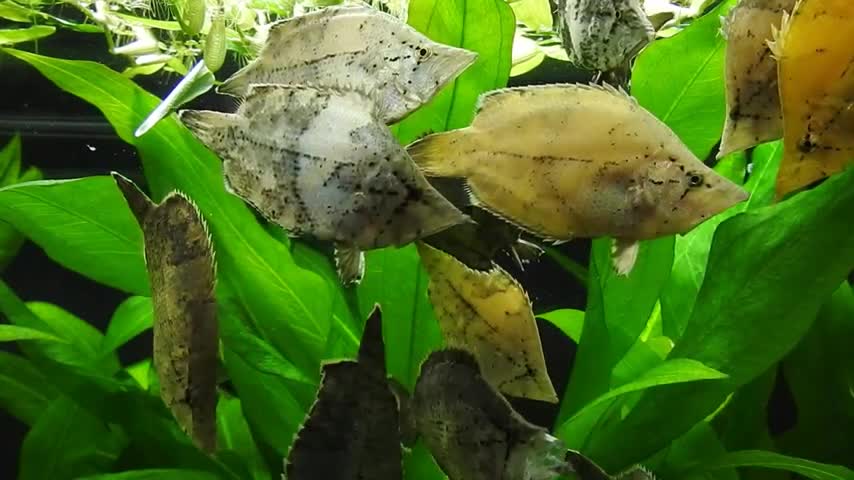
The South American leaffish is a notorious predator that relies on near-perfect camouflage and patience to ambush its prey and hide from larger predators.
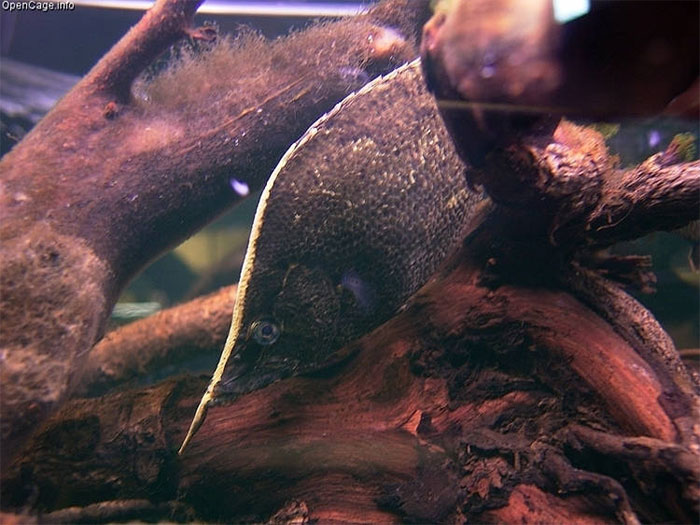
With a characteristic flat, dark brown body, the fish looks quite similar to a leaf.
Native to the Amazon basin in Bolivia, Brazil, Colombia, Peru and Venezuela, the leaf fish not only transforms into an almost perfect dried leaf, but small details on its body such as the tiny filaments at its head are very similar. with leaf stalks.

The leaf fish curls and sways but rarely moves vertically, usually tilting its body downward, so it looks like a dry leaf on the water’s surface.
With a characteristic flat, dark brown body that looks quite similar to a leaf, plus the art of imitating the movement of dry leaves in water, the South American leaf fish’s opponents are almost undetectable.
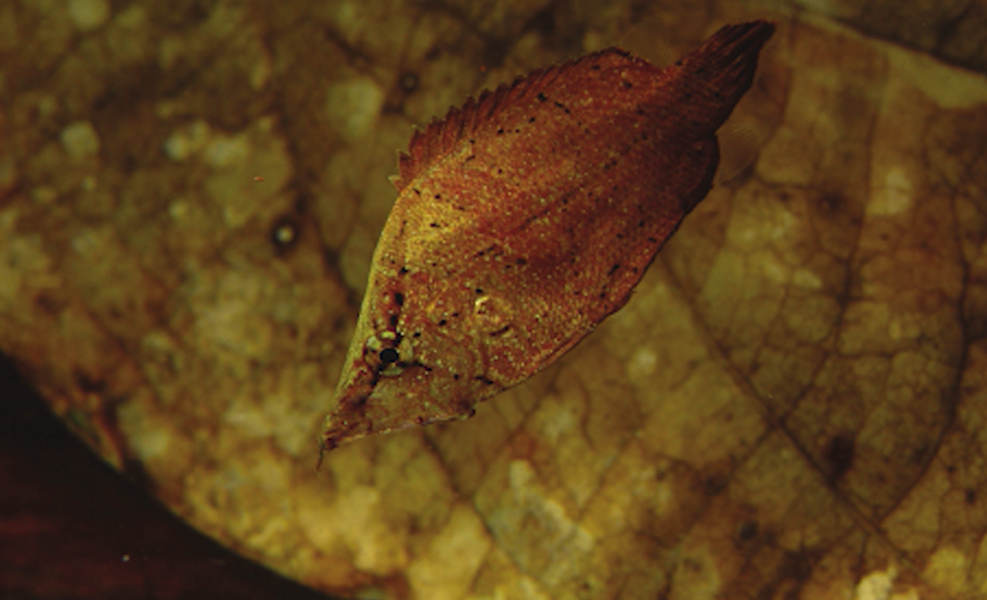
Meanwhile, a predator probably doesn’t waste time chasing a fish floating in the water. In addition to the ability to imitate, leaf fish also have a very attractive hunting technique, which is that they can immediately open their jaws, pulling the victim towards them when at a close enough distance.

Thanks to their superior camouflage ability, many small animals can avoid the dangers that always lurk in the wild.
When it closes its mouth and moves gently, the fish looks exactly like a real dry leaf, difficult to distinguish.
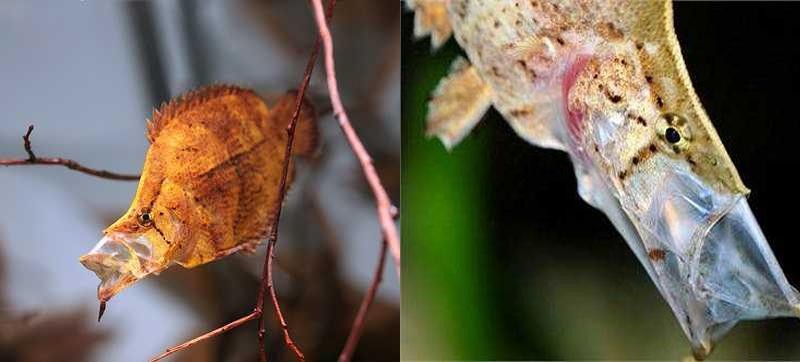
Most of the leaf fish’s prey is usually one-third the length of its body, but sometimes the fish can also suck victims about two-thirds its length.
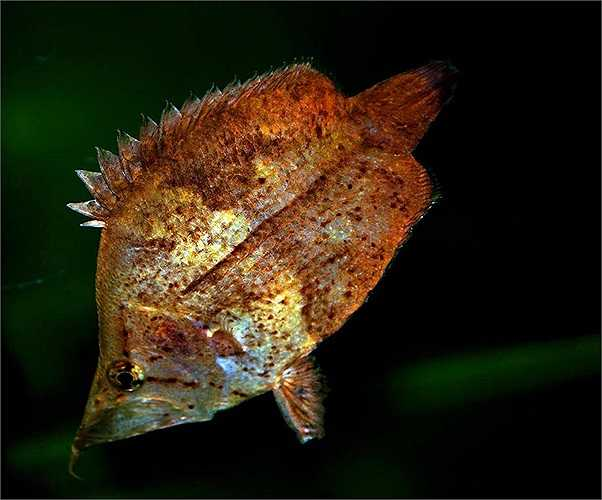
The South American leaffish was discovered in the 1920s during research documenting species associated with mass die-offs of organisms living in a stream. A researcher then accidentally noticed a strange ‘leaf’ with an open mouth among other real leaves floating on the water.
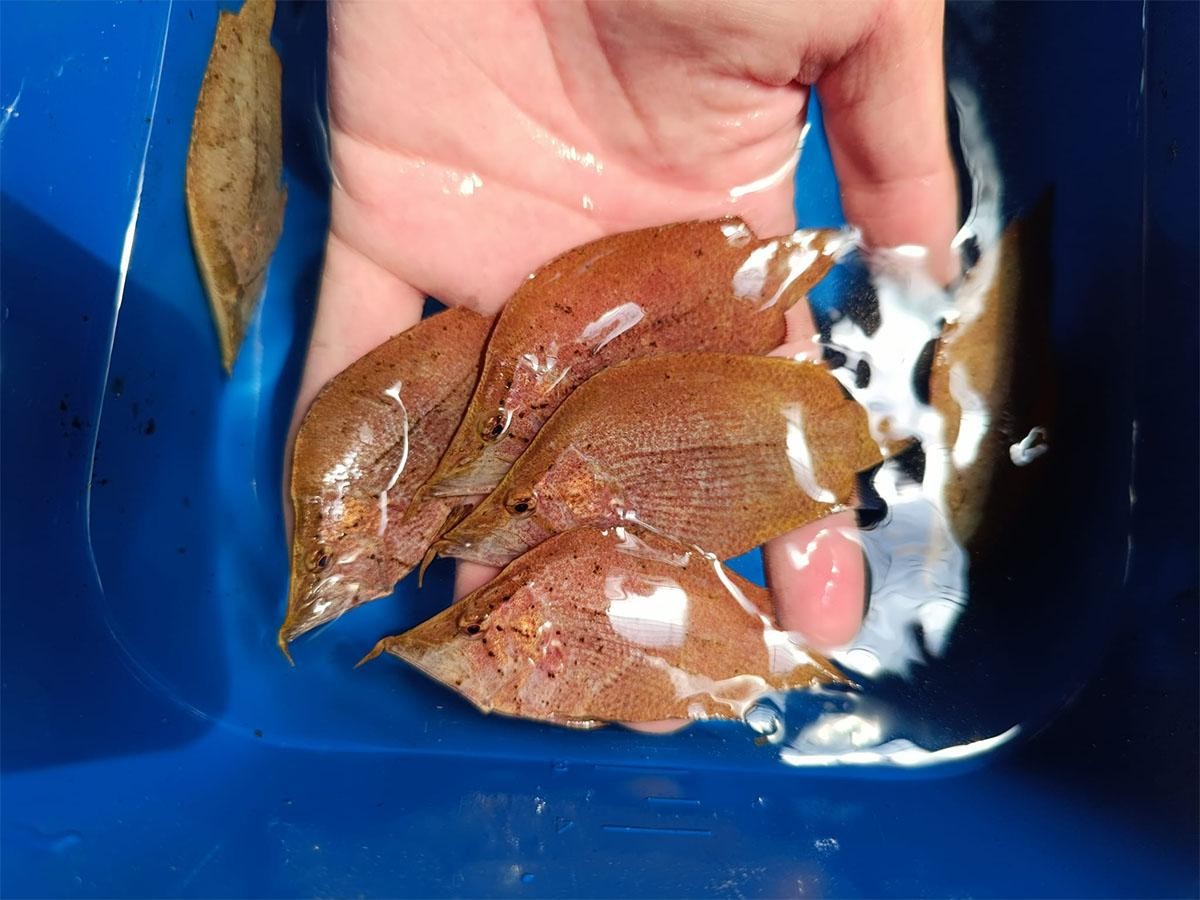
When kept in aquariums, South American leaffish require strict conditions such as clean water, as close to wild conditions as possible.





